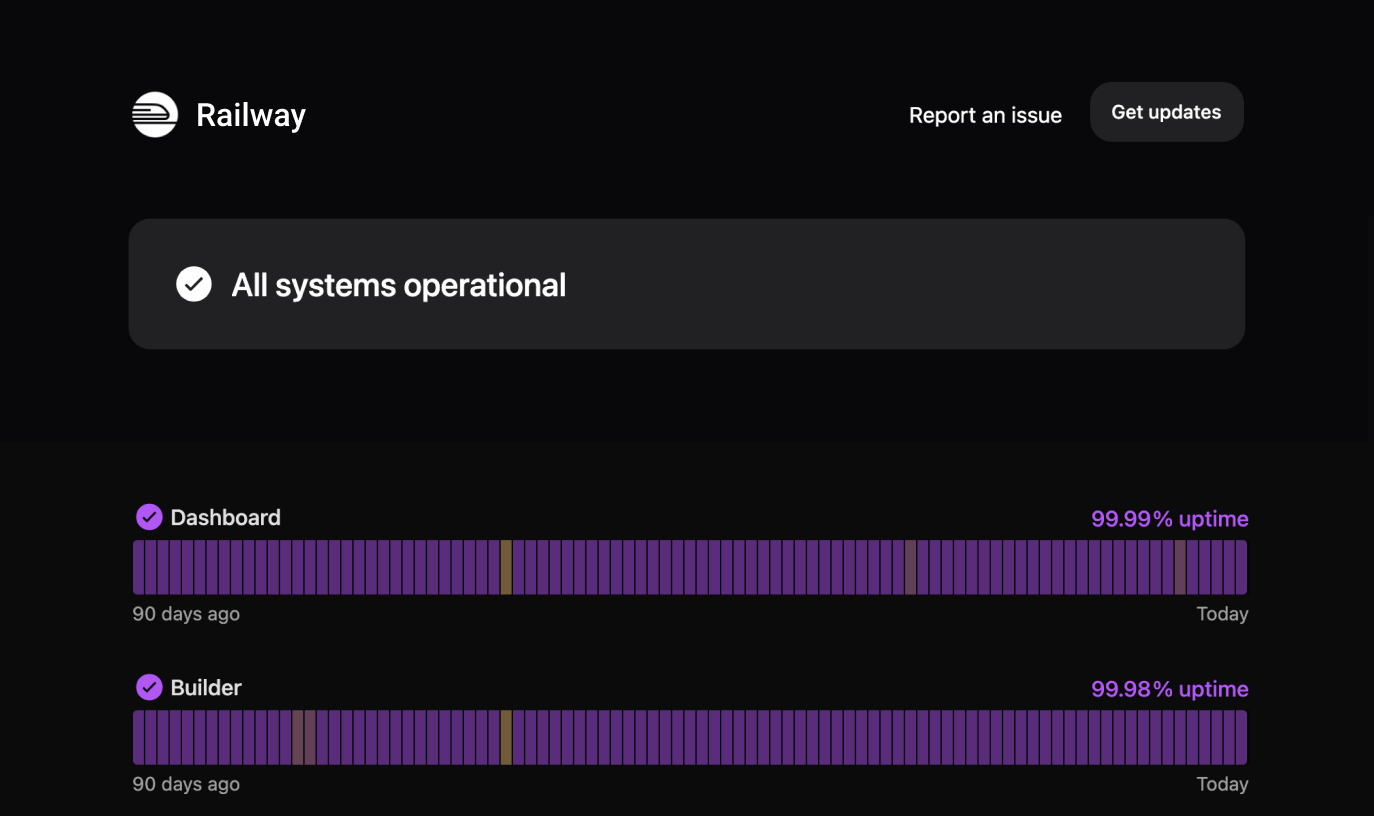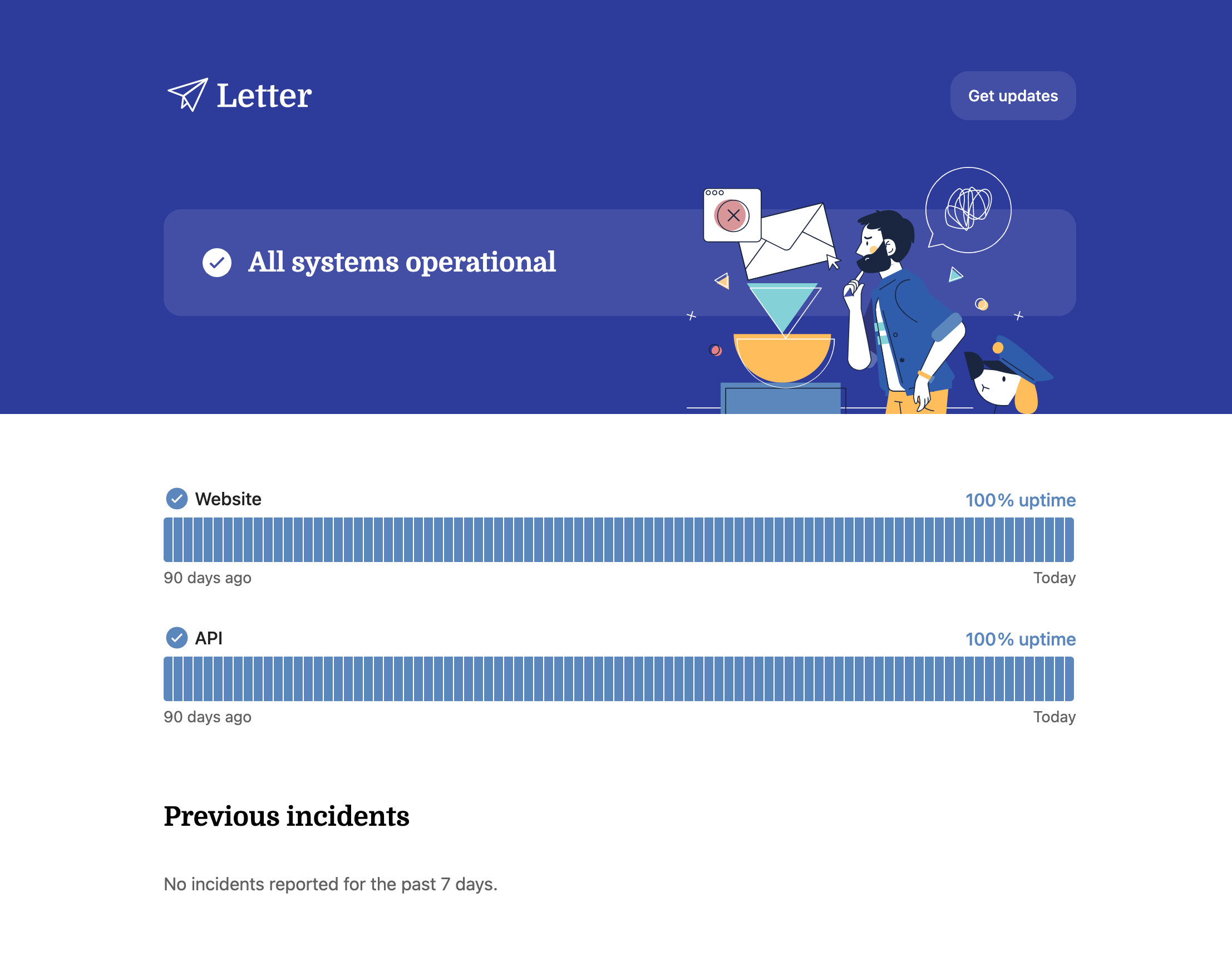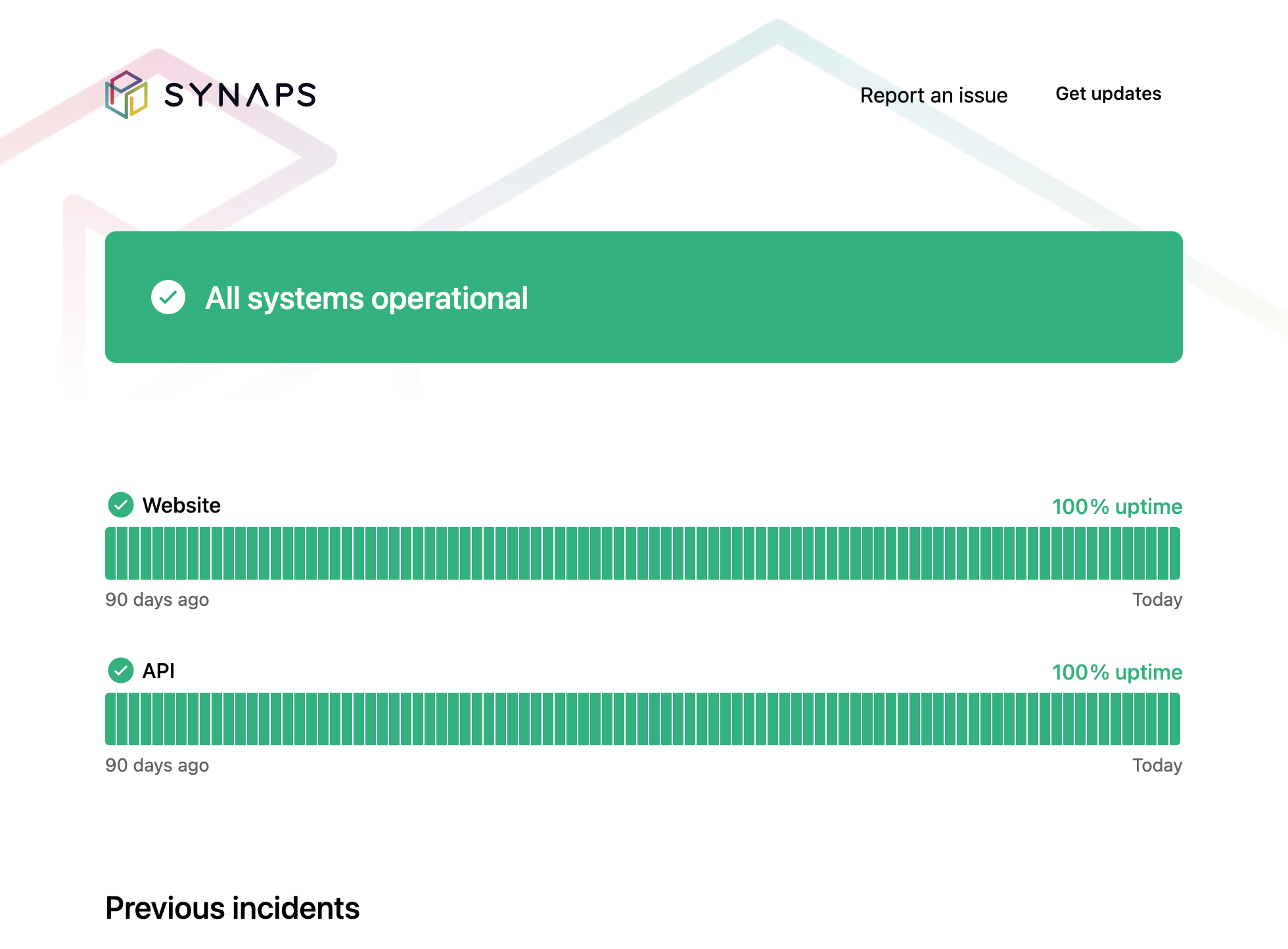A Guide to Release Management: What it is, Why it’s Important, and Best Practices

As any developer knows, releasing software is a lengthy process with many opportunities for mistakes, quality issues, and general error. Development teams need a framework for building and releasing software in order to keep the process standardized and as error-free as possible. This is where release management comes in.
With Instatus, you can provide users with a helpful status page as a back-up when things go wrong, but an application that runs well most of the time is the ultimate goal here.
Luckily, good release management can help you achieve that. In this Instatus article, we’ll take a look at release management, including what it is, why it’s important, and the steps in the release management process.
What is release management?
Release management is the protocol that organizations follow for building and releasing software. The process emphasizes optimizing production speed and the quality of the final product. Release management involves several steps, including:
- Scheduling the timing of the software release
- Assigning responsibilities involved in the release process
- Thoroughly testing the application
- Releasing the application
- Assessing how the release went
Although each organization has a unique release management process, the general principles behind a successful release management process are the same. Most organizations turn to the Information Technology Infrastructure Library to determine the best practices for managing software releases.
Why is release management important?
Having a release management framework in place is important for several reasons, and streamlining your organization’s release management is worth investing time and resources. Here are some of the top reasons why release management is vital to any application development team:
Avoid quality issues
First, successful release management helps ensure that the organization produces a high-quality and reliable product. Releasing software has many steps, and between the development, testing, and deployment process, there are many opportunities for error along the way. Having a solid release management process in place is an important part of quality assurance.
Improve efficiency
A good release management process will make your organization more efficient, and you can prevent releases from becoming disruptive to your workflow. With proper release management, the release cycle becomes less of an interruption and more of a standard, continuous part of the development process.
Satisfied users
With improved production times and higher quality products, you will improve the satisfaction of your clients. But it’s still important to have a backup in case the unexpected happens. Instatus allows you to set up a clean, user-friendly status page to maintain customer trust and satisfaction even when things don’t go as planned.
What are the steps in release management?

So, what does the release management process entail? Although the exact process will look different for each organization, the basic practices of good release management are universal. Below, we’ve broken down the most important steps in the software release management process:
Establish requirements
The first step in release management is establishing the requirements. Typically, a customer or stakeholder will approach developers with one or more requests, either for the implementation of additional features or revisions to the current version. However, not all requirement requests should be immediately approved.
The team will evaluate the request, asking several important questions. The first is whether or not the request is feasible. Will it be valuable in the long run, or is it a short-term fix that only a few users will benefit from?
Secondly, evaluate what the return on investment will be. How much time will the new requests take to implement, and is it a worthwhile investment of time and resources?
Finally, you should evaluate whether or not there’s another way to solve the customer’s problem. Could the standing code be modified to produce the desired outcome, or will a new build be required? Taking time to thoroughly evaluate the request before undertaking the changes is a valuable step in avoiding wasted time and resources, even though deployment frequency is the long-term goal.
Create a comprehensive plan
If the request is accepted, the next step involves creating a detailed plan for the release. There are three main steps in this process, including:
- Creating a plan: Create a detailed plan to assess what will be needed for software deployment. Consider time constraints and what milestones there will be along the way in order to keep your team on track.
- Assigning tasks: Take a careful inventory of the work needed to complete the project. Break down this work into tasks and assign them to team members. Using a project management tool like Jira or Asana can help with this.
- Create a detailed timeline: After considering what milestones your team will need to meet to complete the project, break them down into specific, achievable deadlines. This will help with accountability and remaining true to the overall timeline of the project.
Build the release
This is the step where the actual coding takes place. Write and revise your code to meet the customer’s requirements. It’s best to make sure the code is standardized, so it’s easier for your development team to work through should problems arise in the future. Once that’s done, you can move onto testing.
Perform testing
After the code is complete, create test cases and release the code to a test environment. If any bugs are found, send the code back to the developer, who will fix it and then send it back to the people responsible for testing. This process continues until no more bugs are detected, and the software is deemed ready for release.
Some examples of testing in this phase include:
Official release
At this point in the process, the code is released to the live environment, where it is made available for all users. While this may seem like the end of the process, there are several more important components further down the line.
Once the code is released, the users need to be informed where to find it. They also need to be educated about the changes or additional features in this build compared to any previous version they used. If needed, provide onboarding for users to ensure they understand how to use the release. Going through these final steps will help you get the greatest return on investment.
Post-release
The final step in release management is the post-release component. How did the development process go? What areas can be optimized for more streamlined development and deployment in the future? The goal of every software development life cycle should be to find areas where your team can improve.
After the final product is released, users will inevitably find bugs, gather feedback, and formulate new requests for the developers. In order to maintain customer satisfaction, it’s essential to have mechanisms in place for when things go wrong. With Instatus, you can create a user-friendly experience even when customers encounter issues with your code. You can create an aesthetically pleasing status page to provide insight to users, not only about downtime but uptime statistics as well.
How can you know if your release management has been successful?
As we mentioned previously, between each software development lifecycle, it’s essential to take the time to evaluate how your release management went. Several indicators can help you measure the performance of the process, highlighting areas that have been successful, and others where improvement is needed.. Here are a few questions to consider:
- Timeline: How did your team perform against the timeline? Were milestones met and deadlines achieved in the intended timeframe?
- Impact: Was the overall release helpful to users? Are your customers actually using the current build, or was there little to no benefit?
- Resources: What resources were required to achieve this build? Were more or fewer resources required than expected to build the release and finally deploy the code?
Carefully reviewing each of these indicators will help identify areas for improvement, what parts of the development cycle your team is excelling in, and what changes you need to make going forward.
Conclusion
Developing a successful release management technique for your company is not only worthwhile, it’s also crucial for your organization’s success. Making sure the process has been planned thoroughly and tested sufficiently can help you avoid issues down the line.
Successful release management will help improve the efficiency of your software development process, prevent possible errors, and produce a high-quality final product.
In the meantime, it’s important to have a fallback while perfecting your release management process. Since the occasional bug or hiccup is inevitable, it’s vital to make sure you have a solid backup plan in place to maintain your users’ confidence and satisfaction while you sort things out. Luckily, Instatus can provide that for you. Give your customers the best experience, even during downtime by getting your free status page today!
Get ready for downtime
Monitor your services
Fix incidents with your team
Share your status with customers




